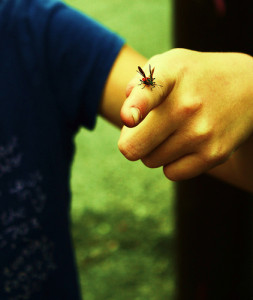Wishing all of you who celebrate Easter and/or Passover a very happy holiday!
Celebrating Easter

Easter is one of the most awaited Christian festivals. It is celebrated throughout the world by the followers of Christian community. It is considered to be very auspicious as it is believed that this was the day when Christ resurrected after crucifixion. This day is of immense religious as well as social significance amongst the Christian community.
Church services and festive celebrations blend together during the Easter weekend. On Easter Sunday in New York and other cities, large Easter parades are held. Easter in USA is also very much commercialized. Easter symbols like bunnies, Easter tree, Easter Eggs and Easter lamb are found in different forms during the Easter festivities throughout the market. The popular trend of Easter symbols such as the Easter bunny and egg tree were introduced to the American folklore by the German settlers who arrived in the Pennsylvania Dutch country during the 1700s. Gradually American people took to crafts such as egg and Easter tree decoration. Easter in US is also a time to enjoy special Easter foods such as baked ham, potatoes and vegetables. Several special recipes are made at each home. Easter parties are also organized where traditional Easter delicacies are served and people enjoy wonderful get together along with Easter games and music.
For children’s Easter games and activities go to: http://www.thekidzpage.com/easter_games/index.html
Observing Passover
 Passover is an eight day celebration observed each year by the Jewish religion. It commemorates the freedom of Jewish slaves from Egypt during the reign of Pharaoh Ramses II. Families celebrate Passover by having a seder. With special foods, songs, and customs, the Seder is the focal point of the Passover celebration. Seder means order, and the Passover story is read in order from a book called a haggadah.
Passover is an eight day celebration observed each year by the Jewish religion. It commemorates the freedom of Jewish slaves from Egypt during the reign of Pharaoh Ramses II. Families celebrate Passover by having a seder. With special foods, songs, and customs, the Seder is the focal point of the Passover celebration. Seder means order, and the Passover story is read in order from a book called a haggadah.
Fearing that Jews were becoming too strong, a Pharaoh decreed that all male Jewish babies were to be killed. Jocheved and Amran, a Jewish couple, wanted to save their infant son – so they put him in a basket that floated him down the river. The infant was rescued by the Pharaoh’s daughter and she raised him as her own son. She named the baby Moses, which means “take from the water.”
When Moses grew up, he empathized with the Jewish slaves and tried to get the Pharaoh to free them. The Pharaoh refused – so there were 10 plagues sent down to Egypt: Blood, Frogs, Lice, Beasts, Cattle Disease, Boils, Hail, Locusts, Darkness, and Slaying of the Firstborn. The namePassover comes from the Plague of Slaying the Firstborn. The Angel of Death passed over the homes of the Jews who had put lambs blood on their doors.
After the 10th plague, Pharaoh agreed to let the Jewish slaves go. They gathered up their belongings quickly, and didn’t have time for their bread to rise, so they had to bake it and take it the way it was. This is why the Jewish people eat matzah during Passover. As the Jews were fleeing, Pharaoh changed his mind, and sent his army after the people to bring them back. Moses parted the Red Sea for the Jews to cross, and as soon as they were safely to the other side, the waters closed on the soldiers, drowning them all. The Jewish people were free.
For children’s activities go to: http://www.apples4theteacher.com/holidays/passover/













 Passover is an eight day celebration observed each year by the Jewish religion. It commemorates the freedom of Jewish slaves from Egypt during the reign of Pharaoh Ramses II. Families celebrate Passover by having a seder. With special foods, songs, and customs, the Seder is the focal point of the Passover celebration. Seder means order, and the Passover story is read in order from a book called a haggadah.
Passover is an eight day celebration observed each year by the Jewish religion. It commemorates the freedom of Jewish slaves from Egypt during the reign of Pharaoh Ramses II. Families celebrate Passover by having a seder. With special foods, songs, and customs, the Seder is the focal point of the Passover celebration. Seder means order, and the Passover story is read in order from a book called a haggadah.